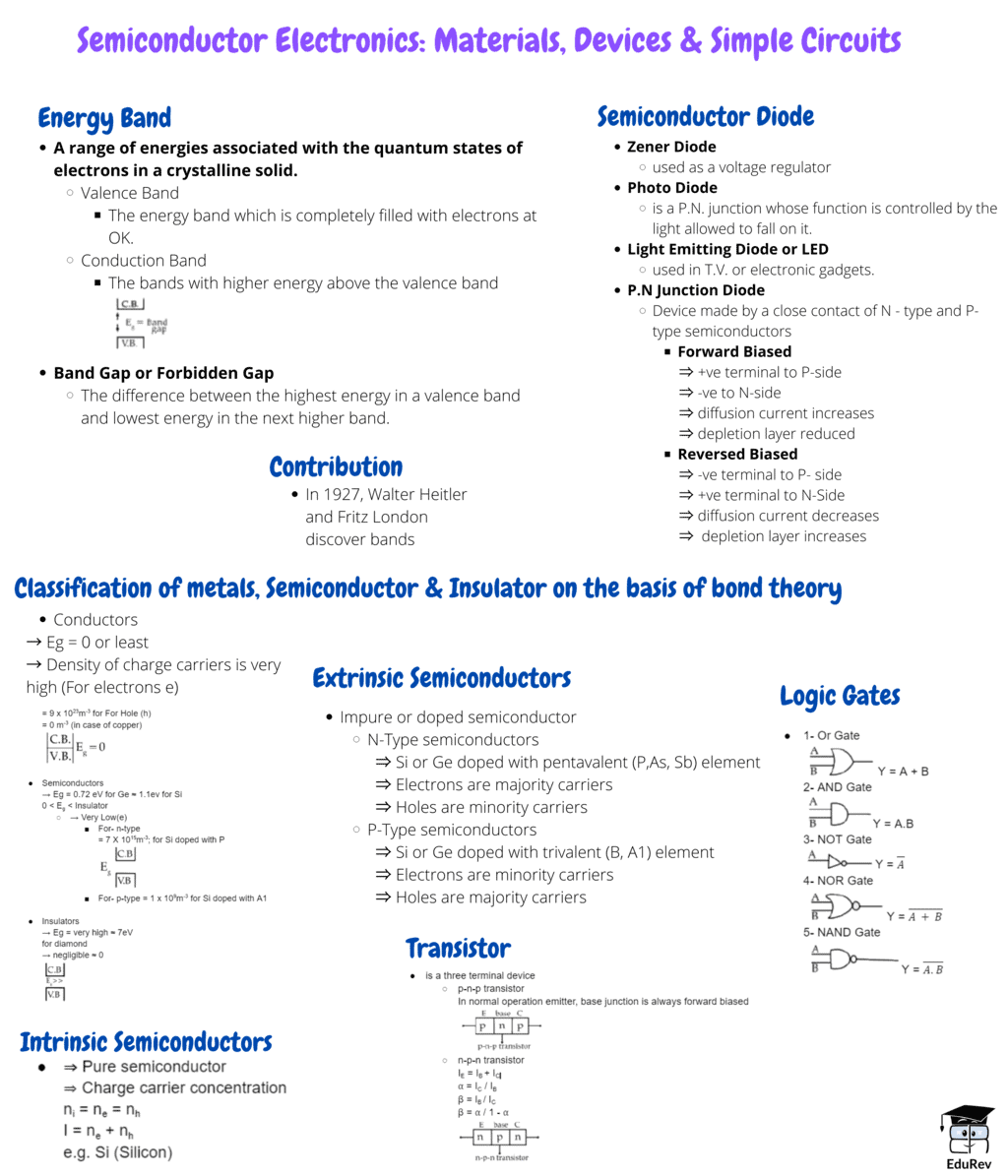NEET Exam > NEET Notes > Physics Class 12 > Mind Map: Semiconductor Electronics: Materials, Devices & Simple Circuits
Mind Map: Semiconductor Electronics: Materials, Devices & Simple Circuits | Physics Class 12 - NEET PDF Download

The document Mind Map: Semiconductor Electronics: Materials, Devices & Simple Circuits | Physics Class 12 - NEET is a part of the NEET Course Physics Class 12.
All you need of NEET at this link: NEET
|
88 videos|421 docs|88 tests
|
FAQs on Mind Map: Semiconductor Electronics: Materials, Devices & Simple Circuits - Physics Class 12 - NEET
| 1. What are the common materials used in semiconductor electronics? |  |
Ans. The common materials used in semiconductor electronics are silicon, germanium, gallium arsenide, and indium phosphide. These materials have unique electrical properties and can be manipulated to create various electronic devices.
| 2. How do semiconductors work in electronic devices? |  |
Ans. Semiconductors work in electronic devices by controlling the flow of electric current. They have the ability to conduct electricity under certain conditions and act as insulators under other conditions. By manipulating the properties of semiconductors, electronic devices such as transistors and diodes can be created.
| 3. What are the different types of semiconductor devices? |  |
Ans. There are various types of semiconductor devices, including diodes, transistors, integrated circuits (ICs), and light-emitting diodes (LEDs). Diodes allow current to flow in one direction, while transistors amplify or switch electronic signals. ICs combine multiple devices onto a single chip, and LEDs emit light when current passes through them.
| 4. How are simple circuits created using semiconductor devices? |  |
Ans. Simple circuits can be created using semiconductor devices by connecting them in specific configurations. For example, a basic circuit can be formed by connecting a power source to a resistor, which is then connected to an LED. When the circuit is closed, current flows through the LED, causing it to emit light.
| 5. What are the advantages of using semiconductor electronics? |  |
Ans. Semiconductor electronics offer several advantages over other electronic technologies. They are smaller in size, consume less power, and are more reliable. Additionally, semiconductors can be manufactured at a lower cost and can be easily integrated into complex electronic systems, making them highly versatile.
Related Searches
















